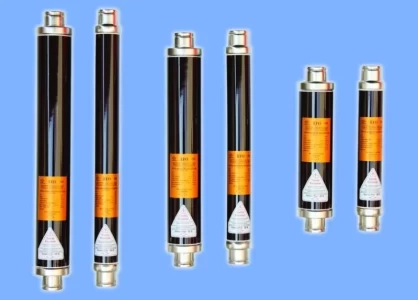Protecting Branch Circuits With Low Voltage Fuses
Low voltage (LV) fuses are unsung heroes within electrical systems, silently safeguarding branch circuits from potentially damaging overcurrent conditions. Found in homes, buildings, and commercial facilities, these essential components play a critical role in preventing electrical fires and ensuring the safe operation of appliances and equipment. This article explores the crucial function of LV fuses in protecting branch circuits and the benefits they offer for electrical safety and system reliability.
Branch Circuits and Overcurrent Protection Needs
Electrical systems are typically divided into circuits, each supplying power to a specific area or group of appliances. Branch circuits represent the final distribution level within a system, directly feeding outlets, lights, and individual appliances. These circuits are designed to handle a specific maximum current based on the connected loads.
However, various factors can cause overcurrents exceeding the circuit's capacity:
Overload: Connecting too many appliances or exceeding the rated power draw on a circuit can create an overload condition.
Short Circuit: A direct connection between the live and neutral wires, bypassing the intended load, results in a short circuit and a sudden surge in current.
Left unchecked, overcurrents can lead to overheating of wires, insulation damage, and potential fires. LV fuses act as the first line of defense in such scenarios, interrupting the flow of current before these hazards can occur.
How Low Voltage Fuses Work
LV fuses are relatively simple devices consisting of a calibrated fuse element housed within a non-combustible body. The element is designed to melt and interrupt the circuit if the current exceeds a predetermined value for a specific time duration.
Two key characteristics define an LV fuse:
Current Rating: This specifies the maximum continuous current the fuse can safely carry without melting. Branch circuits are protected by fuses with a current rating slightly higher than the circuit's designed capacity to allow for normal operation but trip during overcurrent conditions.
Interrupting Rating: This indicates the maximum fault current the fuse can safely interrupt. Selecting a fuse with an interrupting rating exceeding the potential fault current in the circuit ensures the fuse can effectively clear a short circuit.
When an overload or short circuit occurs, the increased current flow generates heat within the fuse element. In an overload scenario, the heat buildup gradually melts the element, ultimately causing the circuit to open and interrupt the current flow. In a short circuit, the surge in current melts the element much faster, achieving a rapid interruption of the fault.
Benefits of LV Fuses in Branch Circuit Protection
The implementation of LV fuses within branch circuits offers several crucial benefits for electrical safety and system reliability:
Preventing Electrical Fires: By interrupting overcurrents, LV fuses prevent excessive heat buildup within wires, which is a leading cause of electrical fires. This safeguards property and lives from potential fire hazards.
Protecting Appliances and Equipment: Overcurrents can damage sensitive electronics and appliances. LV fuses act as a sacrificial element, taking the brunt of the fault current and protecting downstream equipment.
Circuit Isolation: In the event of a fault on one circuit, the associated fuse will trip, isolating the faulty section and preventing the entire electrical system from shutting down. This minimizes downtime and facilitates easier troubleshooting.
Cost-Effective Protection: LV fuses are relatively inexpensive components compared to the potential damage they prevent. Their simple design and ease of replacement make them a cost-effective solution for branch circuit protection.
Simple Maintenance: Replacing a blown fuse is a straightforward process, requiring minimal technical expertise. This facilitates user-friendly maintenance and ensures continued circuit protection.
Considerations for LV Fuse Selection and Use
While LV fuses offer significant benefits, some considerations are crucial for optimal protection:
Selecting the Right Fuse: Choosing a fuse with the appropriate current and interrupting ratings for the specific circuit and connected loads is essential. Following manufacturer recommendations and electrical codes is vital.
Derating in Certain Conditions: Environmental factors like high ambient temperature can necessitate derating, meaning using a fuse with a lower current rating than its nominal value. Following derating guidelines ensures proper protection even in challenging environments.
Visual Inspection: Regularly inspecting fuses for signs of damage or corrosion can help identify potential issues and prevent unexpected failures.
Using the Correct Fuse Type: Different types of LV fuses exist with varying characteristics. Selecting the appropriate type for the specific application is crucial for ensuring reliable performance.
Never Bypassing a Blown Fuse: A blown fuse indicates a potential problem within the circuit. Replacing it with a fuse of the same rating and investigating the cause of the overload or short circuit is essential for maintaining safety.
Low voltage fuses are a fundamental component in safeguarding branch circuits within homes and commercial facilities. By interrupting overcurrents and preventing electrical fires

